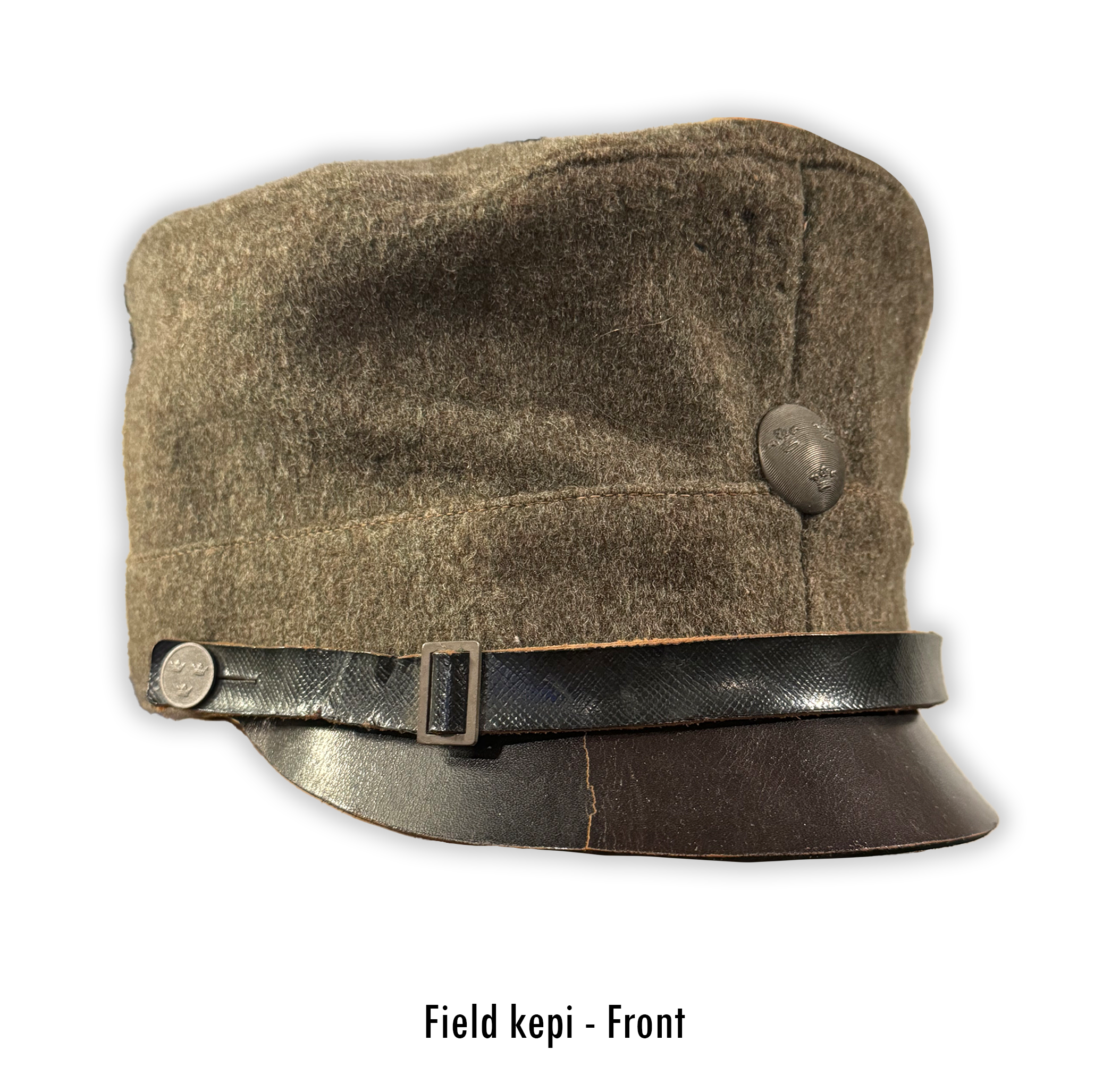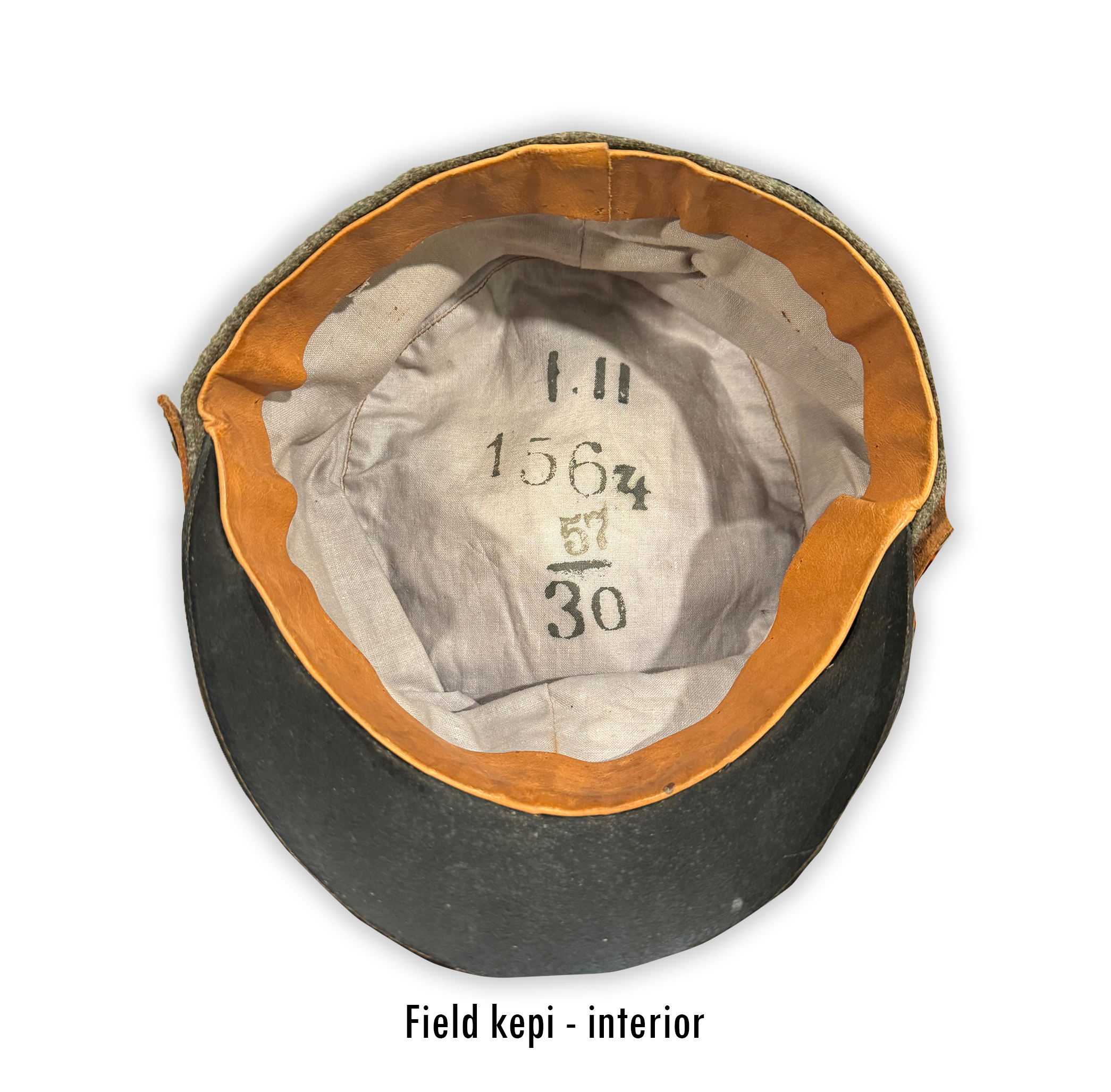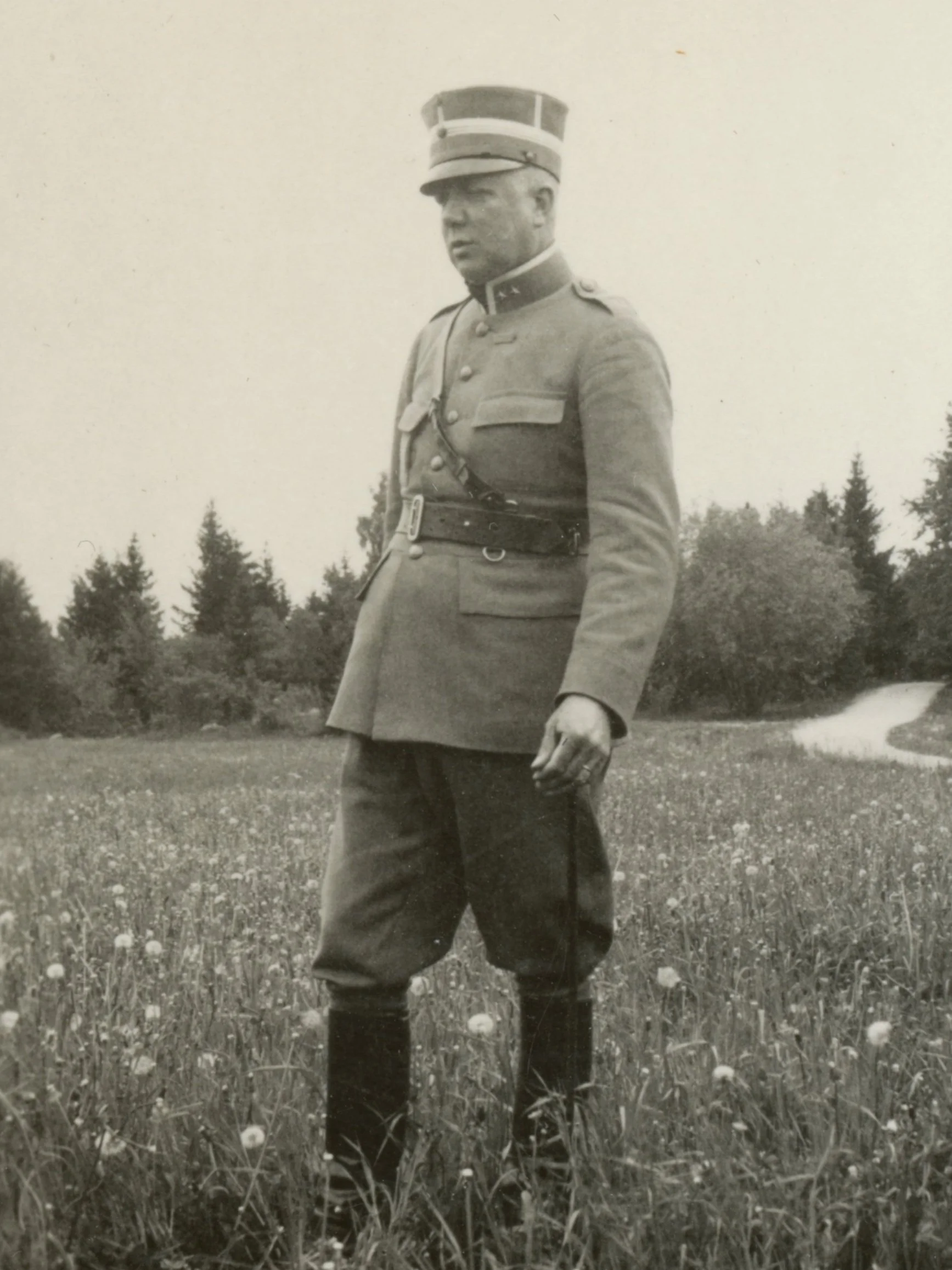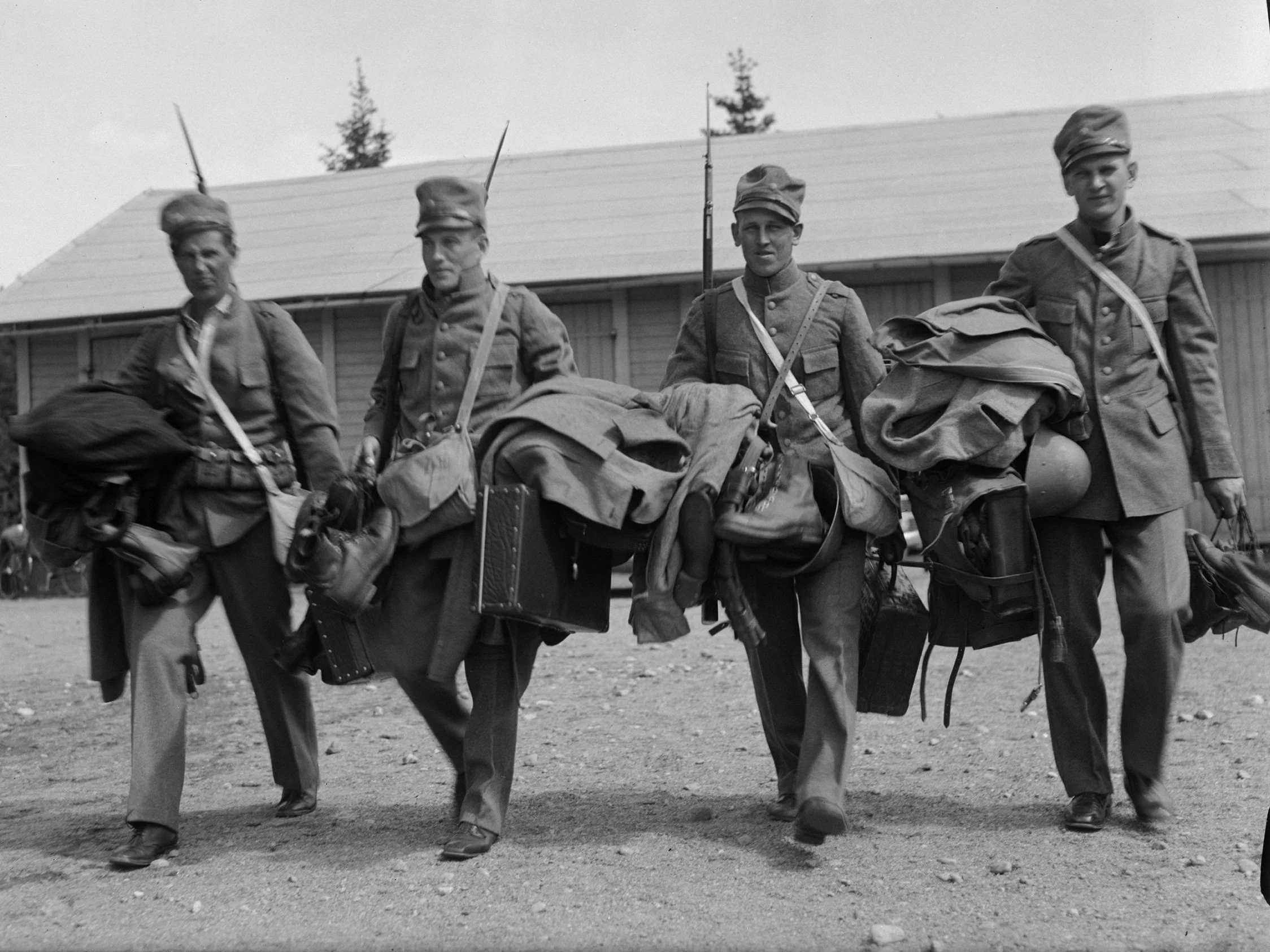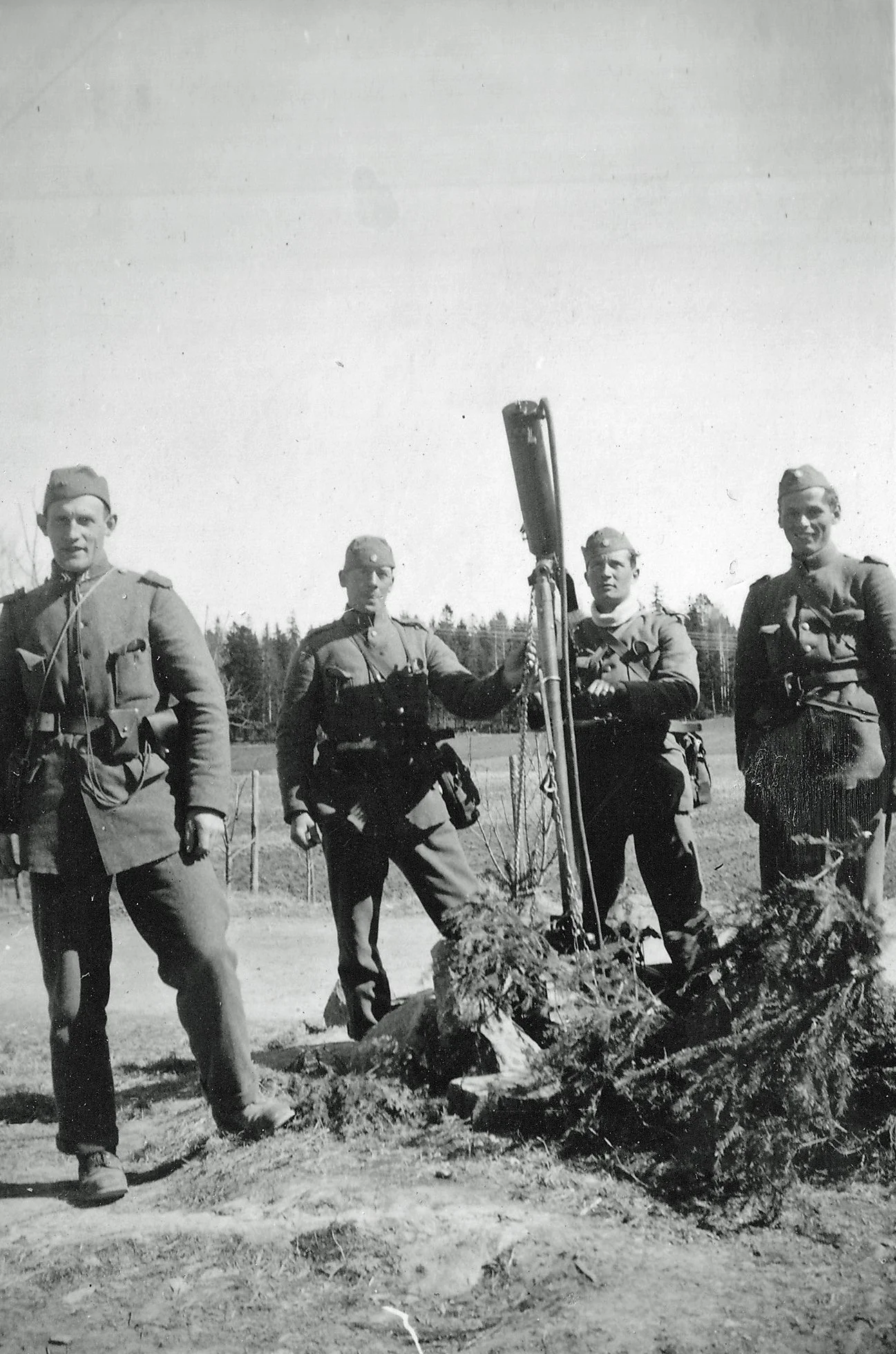
The m/1923 uniform
This webpage is still under development, information, media, format, etc may be subject to change in the future. THANKYOU FOR YOUR SUPPORT!
The m/1923 uniform is an often overlooked uniform the 20th-century Swedish military uniform hierarchy, despite its ambitious beginnings. Although it was an modern and logical uniform by the time of its adoption, the field wool m/23 never achieved the same widespread use of its predecessor, the m/1910. As a result it would rarely being issued to entire companies although it still primarily saw service among officers, earning it the reputation as Sweden's interwar officer's uniform.
Many m/23 uniforms were later converted to the m/1923-37 design in the late 1930s for modernization. The m/23 continued to be used alongside its conversion variants and the succeeding m/1939 uniform into the Beredskapsåren period, when it was gradually phased out of service.
Development
Following the conclusion of the Great War in 1918, the Swedish military had extensively studied and taken careful note of the advancements and technology discovered by the warring nations with the full intentions to utilize these discoveries to their own advantage. At this point, concerns arose over the realistic longevity of the aging m/1910 uniform design in a potential future trench war, and the need for a more appropriate trench uniform became apparent.
The military planned to test numerous uniform designs in 1919, most of which were likely roughly inspired by the uniforms of foreign combatant nations. Unfortunately, at the time of writing this, not much is known about the specific details of the 1919 uniform trials, including the designs tested or the general outcome and reception of each submission. However, it can be reasonably assumed that the Italian-inspired uniform emerged as the favorable design from the trials. As expected, the uniform underwent some necessary revisions between the conclusion of the trials and its official adoption for Swedish military service in December of 1923
Service history
With its offical adoption in December of 1923, Production would near imminently ensue. the field m/1923 uniform held the ambitious goals to inevitably replace the widely mass-produced aging m/1910 uniform. Though production began swiftly after adoption, both the uniform and the military's ambitions suffered the consequences of the unfortunate political climate of its time. The 1925 Defense Act passed by the Riksdag significantly decreased the military's overall budget. Despite this setback attempted military restructuring aimed to address this inconvenience was made to keep the uniform rollout on track, but further budget cuts followed with another crippling Defense Act in 1928. Somehow things would become more difficult with the worldwide economic depression in 1929, so although plans to continue the m/23 production would continue, the realities of fully equipping the military became far-fetched for the foreseeable future. Funds were prioritized elsewhere, and the m/1910 contuined to remain the militaries primary field uniform.
The m/23 would henceforth receive considerably limited production and distribution, typically issued in small quantities to specific units and regiments. Despite its limited issuing, the m/23 quickly gained a reputation as a "ranked" uniform, often being exclusively issued to NCOs and field officers within a company or battalion. This perception wasn't helped by the officer's variant, which unlike its field variant incredibly swiftly took off and became widely popular amongst many Swedish officers thanks to its sleek, modern design – a stark contrast to the majority of the aging uniforms the military still utilized. Nevertheless, the m/1923, even in its limited role, continued to see use well into the 1930s. By the mid 1930’s the political climate throughout Europe had changed drastically, With the fear of war breaking out looming on the horizon and the Riksdag and military recognizing the need for urgent reform so the decision was made in 1935 to begin the process of building up the military once more. The military's rebuild program would make sure not to exclude uniforms. Once more, in hopes of finally replacing the still-prevalent outdated m/10 uniforms, the military focused on two initiatives: introducing a modernized and improved cut of the m/23 uniform, and offering a conversion program to upgrade existing uniforms to the new design. After the passing of the optimistic 1937 defense act, the new m/1923-37 uniform along with its conversions would be introduced as well. However, despite the introduction of its successor, the m/23 would slightly begin to be more thoroughly issued throughout the military even into the Beredskapsåren period. The m/23 and its successor, the m/23-37, during the wartime period however saw a short lifespan. By mid-war, they were rapidly replaced by the more successful m/1939 uniform. Alas by the war's end, the m/23 and m/23-37 were almost entirely phased out, bringing an end to over 20 years of one of Sweden's most ambitious, yet unfortunate, military uniforms.
SOURCES:
Note* Will come back to add in the future




